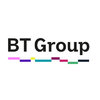Filter interviews by
Huawei Technologies NOC Engineer Interview Questions and Answers
Huawei Technologies NOC Engineer Interview Experiences
1 interview found
Interview Questionnaire
3 Questions
- Q1. 1- What do you thik about Work from Home. Please share your view
- Q2. What impact of Covid 19 in india
- Ans.
Covid 19 has had a significant impact on India.
India has reported a high number of Covid cases and deaths.
The pandemic has affected the economy, leading to job losses and reduced income.
The healthcare system has been overwhelmed, with shortages of hospital beds, oxygen, and medicines.
The government has implemented lockdowns and other measures to control the spread of the virus.
Vaccination efforts have been ramped up, b...
- Q3. What do you thik about Huawei
Top trending discussions






Interview questions from similar companies

I applied via Campus Placement and was interviewed before Nov 2023. There were 3 interview rounds.
General aptitude questions
(1 Question)
- Q1. Questions based on resume
(1 Question)
- Q1. More based on resume but from managers

I applied via Referral

(2 Questions)
- Q1. About coding and all oops concept SQL, unix
- Q2. Unix, sql, language and oops concepts questions
Interview Preparation Tips

I applied via Walk-in and was interviewed in Jan 2021. There were 4 interview rounds.
Interview Questionnaire
2 Questions
- Q1. Basic problem scenario and some more advance puzzles
- Q2. Basic string manipulation questions along with oops concepts and basic DS
Interview Preparation Tips

I applied via Company Website and was interviewed in Nov 2021. There was 1 interview round.
Interview Questionnaire
1 Question
- Q1. What projects you have during your graduation?
- Ans.
During my graduation, I worked on several software projects that involved developing web applications and implementing algorithms.
Developed a web application for an online shopping platform using HTML, CSS, and JavaScript.
Implemented a sorting algorithm in Java as part of a data structures course project.
Created a mobile app prototype for a travel planning tool using React Native.
Collaborated with a team to build a dat...
Interview Preparation Tips

I applied via Naukri.com and was interviewed before Apr 2022. There were 6 interview rounds.

Online hackerrank test
Online hacker rank test
(2 Questions)
- Q1. Technical one on one round related to projects and technologies
- Q2. Projects and programming language related ds algo
(2 Questions)
- Q1. Managerial round
- Q2. Basic everyday situation questions
(1 Question)
- Q1. Final hr round salary etc

I applied via Campus Placement and was interviewed before Jun 2021. There were 4 interview rounds.
Amcat aptitude tests
Gd on online/offline shopping
(1 Question)
- Q1. Basic technical questions scenario based questions
(1 Question)
- Q1. Expectations and basic case study questions
Interview Preparation Tips

I applied via Recruitment Consultant and was interviewed in Mar 2021. There were 4 interview rounds.
Interview Questionnaire
1 Question
- Q1. 1. Questions regarding SIP, RTP, RTCP. 2. C++ programs like linked list, virtual functions and exceptions.
Interview Preparation Tips

Interview Questionnaire
1 Question
- Q1. Solve a magic cube
Interview Preparation Tips
Experience: Aptitude test was taken on aspiring minds and name of the test series was AMCAT.600 students gave the exam and 90 were selected for the GD.
There were four sections and each section had a minimum number of questions to be attempted and there was no negative marking.Navigation among questions and sections were not allowed so use you time and mind carefully.
Section 1 - Quants
Section 2 - Verbal Ability and Critical Reasoning
Section 3 - Logical Reasoning
Section 4 - Programming and Computer Science
Tips: Speed is the key.key. Quants are easier they test only the speed of the candidate.I think the programming section has the max weight age so try to focus on that section and try to score maximum marks in that section. Programming questions were tough and there were questions from a wide range of subjects Networking , Algorithms ,Data Structures , Java, C/C++, Operating Systems,Advanced Databases etc.
Round: Group Discussion
Experience: Group discussion was very ordinary and easy to crack if you have the right content and suitable examples and clear and crisp communication skills.I took the against side of the issue which only 2 out of 10 members did and I was very bold and effective with my statements and defended my stance effectively.
Tips: Give examples,Be bold and clear and crisp .
Duration: 25 minutes
Round: HR Interview
Experience: My HR interview started at around 11pm in the night so it was very chilled out.He asked me about what excites me , why verizon , what projects I have done and what role I've played it them.He asked about my college life ? What do we study ? Why do you want to work for a MNC rather then a startup? and many more general questions which I don't remember because my interview was very chilled out. I was having fun.I asked him a lot of questions about job profile and company and many of their products so he was impressed with me.
Tips: Please do a detailed survey of the work that the company does and have knowledge about the sector and SDLC.
Round: Puzzle Interview
Experience: I was given a 3*3 and 5*5 magic cube to solve.I tried a lot of times and it took nearly 15-20 minutes to solve both the questions correctly.He asked my approach I said politely Hit and Trial and then he said to me there's a shortcut and he told me a very nice and quick trick to solve the magic cube.
Round: Technical Interview
Experience: Basic programming questions were asked about patterns, strings and some algorithms like quick sort and merge sort.
Major tough and difficult questions were asked on databases and advanced databases in oracle.He asked many questions about the projects that I've done.In depth questions regarding projects were asked.He asked questions about various things used in web application and may question regarding MySql and Tables and JOINS.
Tips: Keep your calm even if you don't know any answer. I couldn't answer to one question of databases which carried our discussion on that questions for around 10 mins but still I couldn't answer the question and in the end I asked just out of curiosity that I want to know the answer to the question and he explained me the concept perfectly.
Skills: Programming, Databases, Communication Skills, Software Development Life Cycle
College Name: SRM University

Interview Questionnaire
6 Questions
- Q1. Suppose you are recruited as an ECE engineer in IRCTC. Your job is to stop the train accidents that happen every now and then. Use your Applied Electronics to construct a scheme/plan. Tell me how will you ...
- Ans.
Using Applied Electronics to prevent train accidents in IRCTC
Implement sensors to detect obstacles on tracks
Use GPS and communication systems to alert train drivers of potential dangers
Install automatic braking systems in case of emergency
Regular maintenance and inspection of tracks and trains
Train and educate staff on safety protocols and emergency procedures
- Q2. Explain the working of IC 555 timer
- Ans.
IC 555 timer is a versatile timer IC used in various applications like oscillators, timers, and flip-flops.
IC 555 timer has three modes of operation: monostable, astable, and bistable.
In monostable mode, the output is high for a fixed duration when triggered.
In astable mode, the output oscillates between high and low states.
In bistable mode, the output remains in either high or low state until triggered.
IC 555 timer ca...
- Q3. How internet works, Network model etc
- Ans.
The internet is a global network of interconnected devices that communicate using standardized protocols.
The internet is based on the TCP/IP protocol suite.
Data is transmitted in packets across the network.
The network model consists of layers, including the physical, data link, network, transport, and application layers.
Routing protocols are used to direct packets to their destination.
Examples of internet applications ...
- Q4. General question from my CV
- Q5. Tell me about yourself
- Ans.
I am a software engineer with experience in developing web and mobile applications using various programming languages and frameworks.
Proficient in Java, Python, and JavaScript
Experience with React, Angular, and Node.js
Strong understanding of database management systems
Passionate about learning new technologies and solving complex problems
- Q6. Family, Schooling, Interests
Interview Preparation Tips
Experience: It was 2.5 hour long AMCAT test comprising of Quant, Verbal ability, analytic ability, technical section comprising questions from C, DSA and other computer fundamentals.
The test is not that difficult so the cutoff generally goes high
Duration: 150 minutes
Round: Technical Interview
Experience: Started with a formal "Tell me about yourself". While I continued for 2 minutes, he read my CV word to word. Since I had always been interested in programming and so it was my strong point. But he didn't even ask my area of interest and directly asked me question from core electronics that too application based. The questions were like this:
1. "Suppose you are recruited as an ECE engineer in IRCTC. Your job is to stop the train accidents that happen every now and then. Use your Applied Electronics to construct a scheme/plan. Tell me how will you proceed?"
I was literally stunned at such a question. However I took some seconds to think and gave him 2-3 answers all applying the idea in one way or the other. Like use of modern sensors, RADAR technology, Use of automated baricates at crossings and explained it to him. He wasn't fully convinced but somehow I was able to do OK.
After that i told him that I was more comfortable in programming and computer science subjects. he neglected this altogether and kept asking me ECE questions. Next questions were like "Explain the working of IC 555 timer." I told him straight away that I didn't know it very well.
After this he moved on to ask me the difference between GSM and CDMA technology, how mobile phones work and the whole concept of cellular telephony. I had prepared well for it and told him even more than he was expecting so he was quite pleased to hear it.
Next were some questions from computer networks like how internet works, Network model etc. I told him I was studying CN currently so i gave him the basics of OSI model explaining briefly each of the 7 layers. Also told him about sub-nets, sub-net masks etc.
After this he asked me some general question from my CV about my achievements like KVPY scholarship, NTSE scholarship and about my research paper. I explained it to him to the best I could. Then I asked a couple questions from my side and this interview was over. The whole process took around 35-40 minutes.
Tips: For technical, have a solid command over all the fundamentals of important subjects. You need to start early. 3rd year is a good time to plan and start your preparation. In your summer holidays before 7th semester, don't focus your full attention on your training. It is also important but you need to take out some extra time for aptitude building, revising concepts and enhancing your communication skills. Be confident and be honest. Try to make the conversation as interesting as possible. Try to be more interested in the company. If possible, do a little homework about the company visiting your college. It will prove to be useful and certainly will give you an edge above others.
Round: HR Interview
Experience: It had hardly been 15 minutes after the completion of my technical interview and I was called for the HR round. Again it started with “tell me about yourself” but this time the lady asked me everything about my family, my schooling, my interests and all. It was a really good 30 minutes spent as the conversation was really interesting. Then she asked me whether I had any problems in relocation. Then it led to a good discussion about how is life different in Hyderabad and Chennai. I asked her a little bit about her education and how she started a formal career in management. She was very happy to respond. Lastly, there were some concluding remarks, a formal thank you and the interview was over.
Tips: Make the interview as interactive as possible. Ask a lot of questions. The person should know that you are really interested in the company. Prepare good answers for HR round well in advance.Any extracurricular activities that you have been a part of may come up in the HR/Managerial round. I was asked what have you done in your college life so far other than studies. I had a lot to say in that matter as i was involved in dramatics, debating, quizzing and other activities right from the school level. They may be interested to know how efficiently have you handled any complex or challenging situations in your life. I was the Event Executive of Fashion Show "PANACHE" in BLITZSCHLAG'13. I explained to HR what all I did to make that event a success and she was really impressed with it.
General Tips: CGPA matters. Not always but definitely it's a point worth considering when the interviewers are confused even after the completion of all the rounds about which students to select.Although not specific to this company, but other companies give a lot of credit to CGPA. It is an important factor along with the 1st written round for the shortlisting of candidates.So, maintain as good a CGPA as you can.In your technical interview you are going to be asked about at least one project that you have been involved in your college life. If some project is mentioned in your CV, it is certain that the interviewer will ask you about it. I have seen discussions as long as 1 hour or more on one's project itself.
College Name: NIT JAIPUR
Skills evaluated in this interview
Tell us how to improve this page.
Huawei Technologies Interviews By Designations
- Huawei Technologies Software Engineer Interview Questions
- Huawei Technologies Senior Engineer Interview Questions
- Huawei Technologies Graduate Engineer Trainee (Get) Interview Questions
- Huawei Technologies Network Engineer Interview Questions
- Huawei Technologies Softwaretest Engineer Interview Questions
- Huawei Technologies Engineer Interview Questions
- Huawei Technologies Senior Technical Lead Interview Questions
- Huawei Technologies Researcher Interview Questions
- Show more
Interview Questions for Popular Designations
- Senior NOC Engineer Interview Questions
- IT Engineer Interview Questions
- Hardware & Networking Engineer Interview Questions
- Information Technology Support Engineer Interview Questions
- NOC Support Engineer Interview Questions
- Desktop Support Engineer L2 Interview Questions
- Desktop Support Engineer L1 Interview Questions
- Data Center Engineer Interview Questions
- Show more
Huawei Technologies NOC Engineer Interview Process
based on 1 interview
Interview experience
Interview Questions from Similar Companies
Fast track your campus placements
Huawei Technologies NOC Engineer Reviews and Ratings
based on 24 reviews
Rating in categories
|
Senior Engineer
432
salaries
| ₹3 L/yr - ₹12 L/yr |
|
Software Engineer
360
salaries
| ₹2.5 L/yr - ₹9.6 L/yr |
|
Assistant Manager
295
salaries
| ₹5.3 L/yr - ₹17.5 L/yr |
|
Deputy Manager
241
salaries
| ₹5.9 L/yr - ₹19 L/yr |
|
Engineer
222
salaries
| ₹2.7 L/yr - ₹8.8 L/yr |

BT Group

Verizon

Telenor

AT&T
- Home >
- Interviews >
- Huawei Technologies Interview Questions >
- Huawei Technologies NOC Engineer Interview Questions














